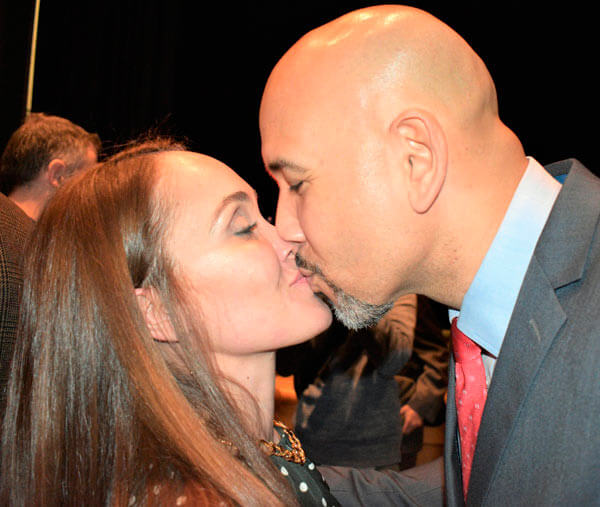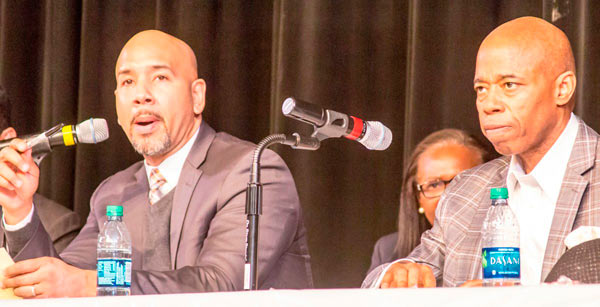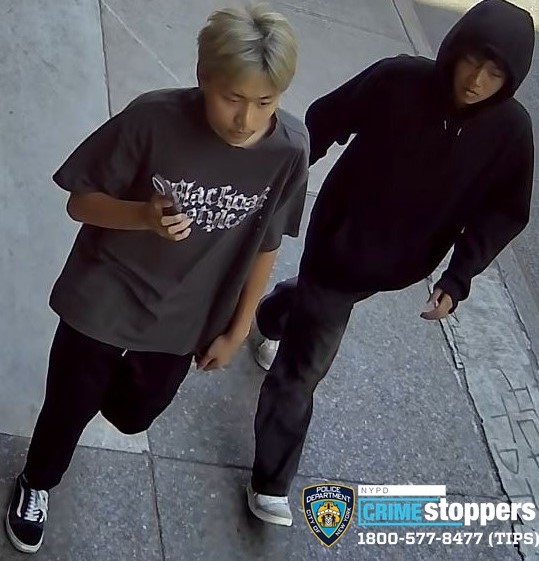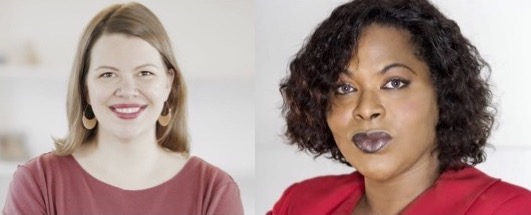Abdul Gill stood alone outside of his school in the frigid cold. Gill, a junior at the Bronx High School of Science, was waiting for students like him, who had decided last Tuesday, Jan. 11, to protest against inadequate COVID-19 protection measures by leaving their classes.
“It’s like they’re taking away the choice to be remote,” Gill said. “For me, remote instruction wasn’t good. I disliked it. But regardless, just because I would probably still continue to come in-person doesn’t mean students who do have (pre-existing) conditions shouldn’t have the choice.”
When the bell rang, eight students left their fifth periods and huddled around the school’s flagpole outside. The BXSCI student walkout, organized by junior Felicia Jennings-Brown, commenced.
“I organized this because our school conditions are not safe right now because no one else is doing it for us,” Jennings-Brown said. “There are so many people sick and our mayor is not doing enough to protect all the millions of kids in the school system.”
That day, the Bronx High School of Science students — who agreed to accept “tardies” instead of “cuts” — were joined by hundreds of students across the city, including Bronx schools like Mott Hall V, X264 Bronx Academy for Software Engineering (BASE), X434 Belmont Preparatory High School and the Young Women’s Leadership School.
The students, all either sophomores or juniors, took turns sharing their experiences returning to school amid an omicron surge: auditoriums packed with students due to teacher absences; substitute teachers from mismatched subjects filling in; lack of physical distancing in classrooms and other shared spaces; and daily health screenings where “you’re allowed in no matter what answer you put.”
They universally agreed on one demand — the option for students to “go remote” and stay home with virtual instruction if they don’t want to be in schools, whether they have pre-existing conditions or it’s simply not within their comfort zones.
New York City public high schools “may choose to offer online and blended learning experiences and may incorporate these online courses into their academic programs,” according to the Department of Education’s (DOE) high school academic policy guide published September 2021.
The city’s DOE published these guidelines last year around the time 3,700 new COVID-19 cases in New York City were reported on Sept. 5. It seemed these guidelines would be followed if the situation worsened. But the following year, 38,000 new cases were reported on Jan. 3. — the same day the city decided to keep its public schools open.
Anywhere from 20%-30% of teachers were absent during the first week back to school, said some Bronx public school teachers. The student attendance rates at New York City’s public schools were as low as 44% on Jan. 7 to as high as nearly 82% on Jan. 18.
Bronx schools, as a whole, continue to have the highest COVID-19 positivity rate compared to other boroughs’ (while keeping in mind there is missing data).
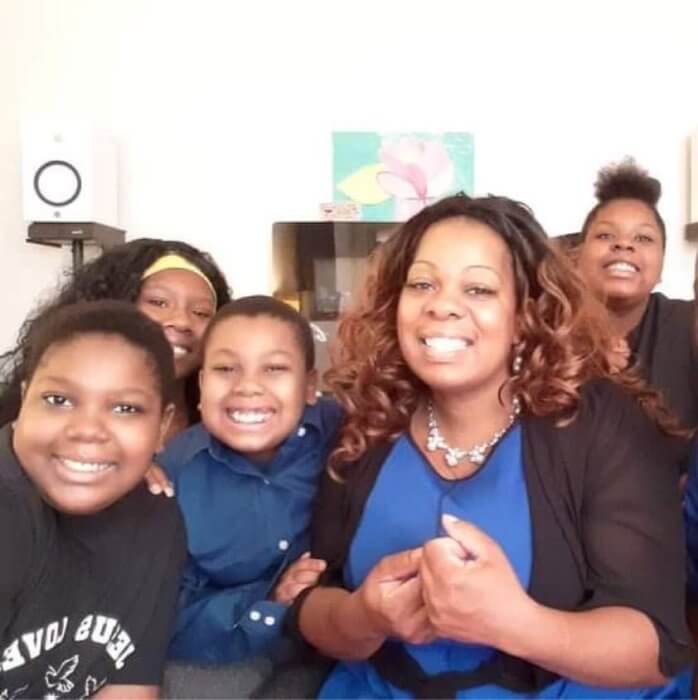
Seniors Amayel Ka and Bonnie Huang are entering their final year at the Bronx High School of Science. They didn’t walk out partly because they were concerned about being marked as “cuts” when their principal, Rachel Hoyle, sent emails to students the morning of the walk-out reminding students of the attendance policy: “students must be in class when they have assigned classes” and “not being in class will result in a cut.”
“There’s a lot of misconceptions about wanting to be fully remote so that we can slack off,” Huang said. “If we wanted to slack off, we could have stayed home from the beginning.”
While Ka didn’t benefit from a fully remote education — “remote learning works for who it works for” — she understands the anxiety amongst students about being in school “a little bit too early.”
“Remote learning has a lot of challenges, like mental health and insecurity when parents have to work, you know, I personally can attest to that,” said Shafakat Sahil, a sophomore who participated in the walkout. “However, for the safety of parents and students around the city, we need a temporary remote option and an option for students to go remote so we can create a safer environment for all students to learn.”
There is speculation, however, that the omicron surge is starting to flat-line in New York City. Still, some parents are choosing to play it safe.
On the first day back to school on Jan. 3, all four of Shariea “MC Heavyn” Perry’s children stayed home. Perry made the executive decision even though she’d rather her children be at their Bronx and Manhattan schools learning alongside their peers.
“If there’s a surge and it’s not safe to be in there, home is gonna be the safest place to be,” said Perry, who added that she also understands the challenges many parents face with fully remote instruction.
In a way, Perry’s children, Jasper, Jasria, Janala and Jania, are learning through hybrid instruction. There are days Perry feels it’s safe enough — she bases this off of emails from their respective schools — to send her children to their schools. Then there are other days where Perry doesn’t want her children to get caught up in a spread.
“I say, ‘Okay guys, we’re not gonna go in today, let them sanitize the room or do what they’re gonna do with the situation room,” said Perry, who is the PTA president of the Bronx High School for the Visual Arts, where two of her daughters attend. “I guess doing what they can do, but at the same time, I really have to do what I have to do as a mother.”
And recently, the DOE changed direction with its situation room — which isn’t an actual physical room, per se, but a rapid response following positive COVID-19 cases. Now, contact tracing falls on individual schools instead of the DOE.
Adams and NYC Schools Chancellor David Banks hinted at the possibility of remote options last week, and said there were discussions with the United Federation of Teachers and its president, Michael Mulgrew. But neither Adams or Banks have actually shared how remote learning would pan out.
“I am working closely with the president of the UFT,” Adams said at a press conference last week. “If we’re able to put in place a temporarily remote option, we welcome to do so with the partnership of my good friend, Michael Mulgrew.”
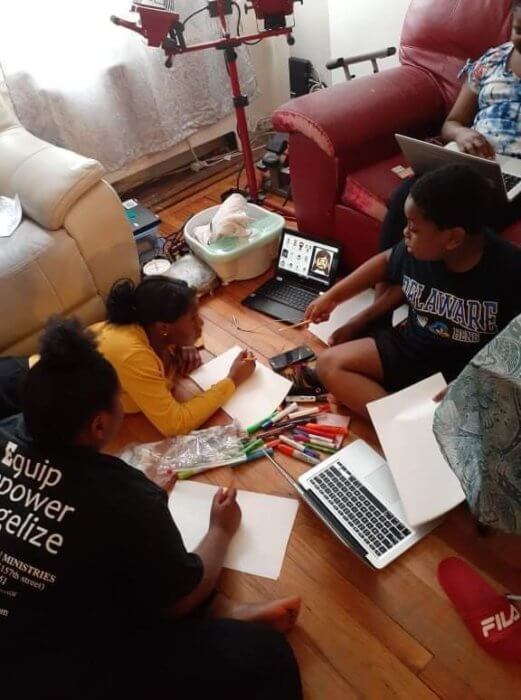
The New York State education department recommended remote learning during the 2021-22 school year for students “with documented medical conditions” and students who have struggled with in-person classes, but “excelled with remote learning.”
But this begs the issue of how children are able to learn when there’s systemic issues all around them — inadequate testing and screening, teacher and faculty shortages, improper ventilation, and the widespread dismay and panic. Could this be even more disruptive to their learning?
“They’re just sitting in the gym sometimes, or the auditorium,” Perry said. “They’re on their phones, I’ve even heard, watching movies sometimes. That’s not conducive to their learning.”
Before the DOE revised its attendance policy on Jan. 14 to allow some semblance of a remote option (for students who are infectious), some teachers, including those who taught Perry’s children, had already been providing virtual instruction to keep students both safe and educated.
“If they put the work on Google classroom and your child does the work, they’re marked present,” Perry said. “My children are respectful and they enjoy their teachers, principal, the faculty, everything. And it goes both ways.”
Following the walkouts, Schools Chancellor David Banks made a statement on Twitter inviting students to discuss their concerns. On Jan. 18, Banks met with 25 student leaders, resulting in plans to have a second meeting and a statement from the students: “We felt dismissed and sensed some disrespect towards teachers. We’re looking forward to our second session and hope student voices are not only heard but acted upon.”
“We just want the option to go remote,” said Jennings-Brown, the organizer of the Bronx High School of Science walk-out. “We want the choice to keep our bodies safe.”
Reach Sarah Belle Lin at sbellejourno@gmail.com. For more coverage, follow us on Twitter, Facebook and Instagram @bronxtimes.

















